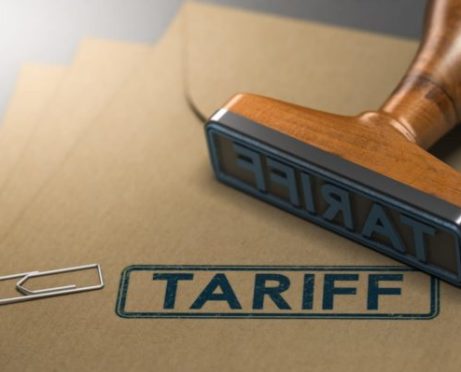
Connor McInerney
Brexit is a cute term used to sum up Britain’s exit (by referendum in 2016) from the 28-member trade and security bloc known as the European Union. But there’s nothing simple about Brexit. It’s an effing mess, which shouldn’t be surprising given the absurdity of the idea itself — that fortress Britannia can do better economically without being hitched to millions other EU citizens whom Brits dismiss as deadweight.
However, Brexit remains in political limbo as backers figure out how to implement their fuzzy-headed folly. The biggest sticking point, ironically, is Ireland — or the invisible border separating Northern Ireland from the Republic. The Irish border is the U.K.’s only land border with Europe, and it may end up scuttling Brexit for good.
Brexit, if it survives, is not just a European problem. It’s an American problem, too. U.S. investors and corporations are already feeling the effects.
What Is the European Union?
To understand Brexit, you need to understand the European Union (or EU). More than 500 million citizens live in the 28 member states, 19 of which use the euro currency. Citizens can work and live in any member state without restrictions.
France and Germany, which were devastated by World War I and World War II, ceded the EU idea in 1950. This move was meant to ensure that both long-time enemies would never go to war against each other again.
In 1958, Belgium, Germany, France, Italy, Luxembourg, and the Netherlands formed the European Economic Community, or EEC. The U.K., along with Ireland and Denmark, joined the community in 1973. Two decades later, the EEC changed its name to the EU.
How Does the EU Work?
The EEC started out as free-trade (no tariffs) bloc for members, but today the EU is involved heavily in education and job training, research and development, and agriculture and rural development. The EU is also involved in several geopolitical issues, promoting environmental and human rights protections and mediating conflicts in Africa and the Middle East.
Four key institutions come together to run the EU: the European Commission, the European Parliament, the Council of the European Union, and the Court of Justice.
The EU spends about 145 billion euros (or $164 billion) annually, supported by contributions from member states. Germany and France pay the lion’s share, or 37 percent. The U.K. contributes close to 13 percent, or about $10 billion a year, to the EU, which is headquartered in Brussels, Belgium.
Why Did the Brits Pull the Trigger?
Conservative Brits in England, Wales, Scotland, and Northern Ireland have never trusted the EU. That mistrust only deepened as the EU amassed more countries, power, and money over the years.
To today’s Brexiters, a stronger and richer EU means a weaker and poorer U.K. British sovereignty, they complain, is being consumed by an ever-expanding bureaucracy and court system in Brussels. And what about that $10 billion annual contribution to help fund the EU? That money could be better spent back home in the U.K.
So Brexit is an attempt to restore or preserve what’s left of British sovereignty, mixed with a bit of a “rage against the machine,” or a populist rebellion against “elitist” pro-EU forces who argue British interests are served best by remaining in the union. But the real issue that drove a slim majority of British voters to cut all legal, commerce, and trade ties with the EU was immigration.
And unlike Trump’s border wall and security freak-out, Britain’s problem is about legal immigration — lots of it — from other EU countries and many of its former colonies (Britain’s empire lasted from 1497 to 1945). Brexit would end the EU’s liberal immigration policies, including the automatic right for EU citizens to live and work in Britain.
Why Is Brexit a Mess?
On June 23, 2016, the U.K. in a high-turnout referendum (72 percent) voted 52 to 48 to leave the EU after almost a half-century of membership. England and Wales elected to leave, but both Scotland and Northern Ireland voted to remain.
Britain had nearly three years to map out its divorce from the EU. It was supposed to officially leave on March 29, 2019. But the withdrawal agreement reached between Prime Minister Theresa May and the EU was rejected three times in the U.K. Parliament. As a result, the EU has given the U.K. an extension to Oct. 31 to get its act together.
This is why Brexit is a mess for both backers and opponents. Nobody really knows how it will play out over the next six months.
Perhaps rewrite a kinder, gentler Brexit 2.0 will come into play. Or perhaps the idea will be abandoned altogether.
The worst outcome would be for the U.K. to “crash out” of the EU without an agreement, which would be a disaster for the British and Irish economies. Trade between the U.K. and the EU bloc would freeze.
Why Ireland Could Kill Brexit
Ireland could be the silver bullet that ends Brexit for good. The arrogant geniuses who cooked up Brexit forgot one thing: the border between the Irish Republic and Northern Ireland — the only border the U.K. has with another EU member. And this is a special border, a near 100-year-old divide.
In 1922, the British imposed the border on Ireland as part of a peace deal following a brutal uprising that won Ireland its independence with the exception of Northern Ireland, which remains part of the U.K.
The border in the 1970s through the ’90s was a flash point again during what are called “The Troubles.” More than 3,000 people died as the Irish Republican Army (Catholics and nationalists) fought a low-intensity guerilla war (mostly bombings) against the British Army and Protestant paramilitary groups.
What began as a civil-rights struggle for Catholics turned into a sectarian slaughter fest. It only came to a halt in 1998 when both sides agreed to the terms of the Good Friday Agreement. Those terms also dismantled any presence of the physical border — namely checkpoints manned by heavily armed British soldiers.
Now Brexit threatens to unwind 20 years of peace in Northern Ireland.
The reason Prime Minister May’s deal with the EU keeps getting rejected is that she does not want a “hard border” between the Republic and Northern Ireland. But hardcore Brexiters want border controls, and they want no-EU links with Northern Ireland. They don’t care about peace. There’s the impasse.
Oh, the Irony, Old Ireland
The EU leadership is solidly behind Ireland as Britain’s former colony drives Brexit backers batty. What sweet irony.
For 800 years, the Irish endured cruelty and misery at the hands of the English and other anti-Catholic bigots. Today, Brexit is at the mercy of the Irish nation, which will not tolerate a new hard border.
I have extensive family in the Republic of Ireland, many of whom do substantial business in Northern Ireland. A hard border would hurt their businesses. As one senior family member — a man with deep community ties and who’s in the know — fretted to me last summer, such a border could lead to war.
And of course, the pro-Brexit hatred toward the Irish is in full swing. The unifying complaint is that the Irish should be helping the British sort out the mess they themselves, full of hubris, created.
Why Should Americans Care About Brexit?
Brexit is bad for the global economy, which isn’t helped when the U.K. economy is struggling with uncertainty. That uncertainty can carry over to the U.S. markets and can negatively affect mutual funds and other investment products with exposure to U.K. companies. U.S. corporations with big U.K. operations are reporting squeezed margins.
Brexit does carry some positives. For example, the U.S. dollar is now stronger versus the U.K. pound. This means you can buy more stuff in England with your U.S. dollars.
Yet the biggest positive is reserved for Ireland, despite the border issue. Not only is Dublin, the capital, seeing a huge influx of financial jobs fleeing London, but Brexit also seems poised to hasten a new united Ireland with Northern Ireland’s return to the Republic and Britain’s departure for the island. So, I guess Brexit isn’t a mess, after all?







